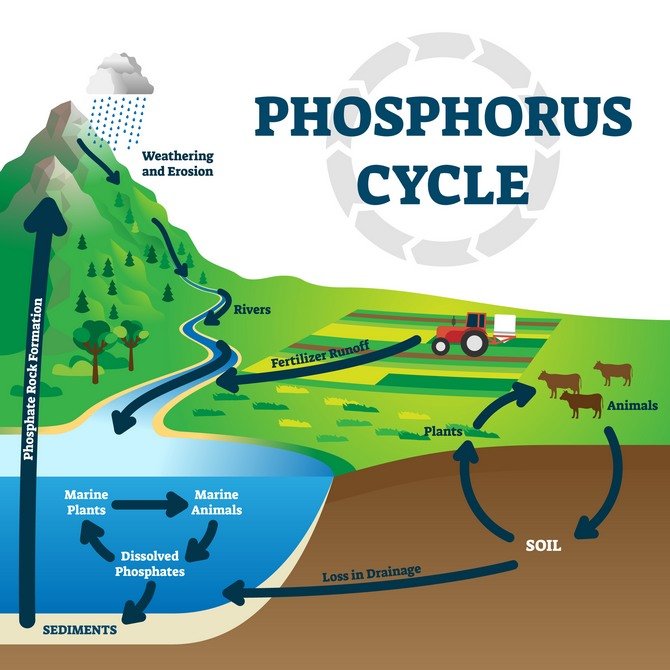Project
Phosphorus cycling across space and time
Recent advances in empirical measurement techniques have improved quantification of turnover and fluxes between P pools, while a vast increase in spatial data on the distribution of P pools has led to improved soil P mapping. However, sustainability assessments still rely mostly on simplistic and poorly constrained soil P estimations. In this project, we (i) synthesize recent improvements in quantifying P turnover and fluxes, and (ii) set that in relation to recent advances in understanding spatial patterns and drivers of P pool distributions. Finally, we discuss opportunities and research gaps in terms of translating that knowledge into predicting crop yield, pollution of water bodies, and incorporation in global carbon models.

According to the planetary boundaries concept, human alteration of P fluxes represents one of the largest threats to maintaining a habitable planet. Soil phosphorus (P) cycling directly impacts three major sustainability outcomes, namely crop yields, pollution of water bodies through P losses, and the amount of carbon dioxide that can be sequestered and stored in ecosystems.
In this interdisciplinary review, we bring together latest findings from different empirical and modeling communities working on soil phosphorus, and confront it with what is actually required in order to make environmental policy. We review recent advances in quantifying spatial and temporal dynamics, respectively. Where relevant, existing datasets are combined or further analyzed to point out knowledge gaps. In addition, we point out policy requirements for meeting sustainability outcomes relating to P, how that relates to recent advances as discussed in sections 1 and 2, and where knowledge gaps remain.
Our findings show that regional-to-global-scale maps of P have been readily used as inputs to predict different sustainability outcomes; however, often without accounting for the large uncertainty in the spatial P data products. Also, while new empirical evidence of P fluxes is starting to be integrated in global carbon models, crop and P loss models are based on outdated concepts of P availability. For each sustainability outcome, we present how empirical and modeling communities can progress to close lingering data and knowledge gaps.